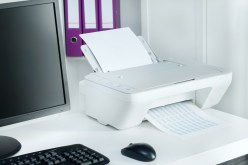How to Use Graphic Organizer Worksheets to Enhance Student Understanding
Graphic organizers are powerful educational tools that help students visualize and organize information. By using graphic organizer worksheets, teachers can enhance student understanding across various subjects. This article will explore different types of graphic organizers, their benefits, and practical tips for incorporating them into classroom instruction.
What are Graphic Organizer Worksheets?
Graphic organizer worksheets are visual representations of information that allow students to map out their thoughts and ideas in a structured manner. They can take many forms, including Venn diagrams, flow charts, mind maps, and storyboards. These worksheets help break down complex concepts into manageable parts and provide a clear framework for learning.
Benefits of Using Graphic Organizers in Education
The use of graphic organizers in the classroom offers numerous benefits. Firstly, they promote active learning by encouraging students to engage with the material instead of passively reading or listening. Secondly, they support critical thinking skills as students analyze relationships between concepts. Lastly, graphic organizers cater to different learning styles—visual learners particularly benefit from seeing information laid out clearly.
Types of Graphic Organizer Worksheets
There are several types of graphic organizer worksheets available for various educational purposes. For example: 1) Mind Maps: Useful for brainstorming ideas or organizing thoughts on a topic; 2) Venn Diagrams: Great for comparing and contrasting two or more items; 3) Flow Charts: Ideal for outlining processes or sequences; 4) KWL Charts (Know-Want-Learned): Help students track what they already know about a topic versus what they want to learn and what they’ve discovered after instruction.
How to Implement Graphic Organizers Effectively
To effectively implement graphic organizers in your teaching practice, consider these strategies: start by choosing the right type of organizer that aligns with your lesson goals; introduce the concept clearly before handing out worksheets; model how to fill them out using examples; encourage collaboration by having students work in groups; finally, assess understanding by reviewing completed organizers together as a class.
Real-World Applications Beyond the Classroom
Graphic organizer worksheets aren’t just useful in academic settings—they can also be applied beyond the classroom. For instance, professionals can use them for project planning or brainstorming sessions at work. Additionally, parents can utilize these tools at home to help children organize their thoughts during homework assignments or creative writing exercises.
In summary, graphic organizer worksheets are versatile tools that can significantly enhance student understanding by promoting engagement and clarity through visual representation of information. By incorporating these simple yet effective resources into your teaching strategies, you’ll foster deeper comprehension and retention among your students.
This text was generated using a large language model, and select text has been reviewed and moderated for purposes such as readability.






